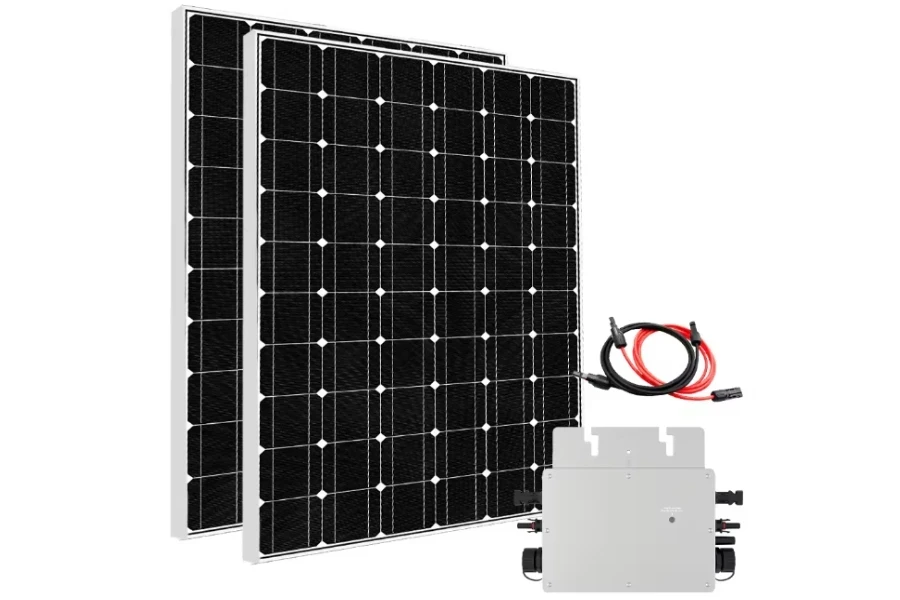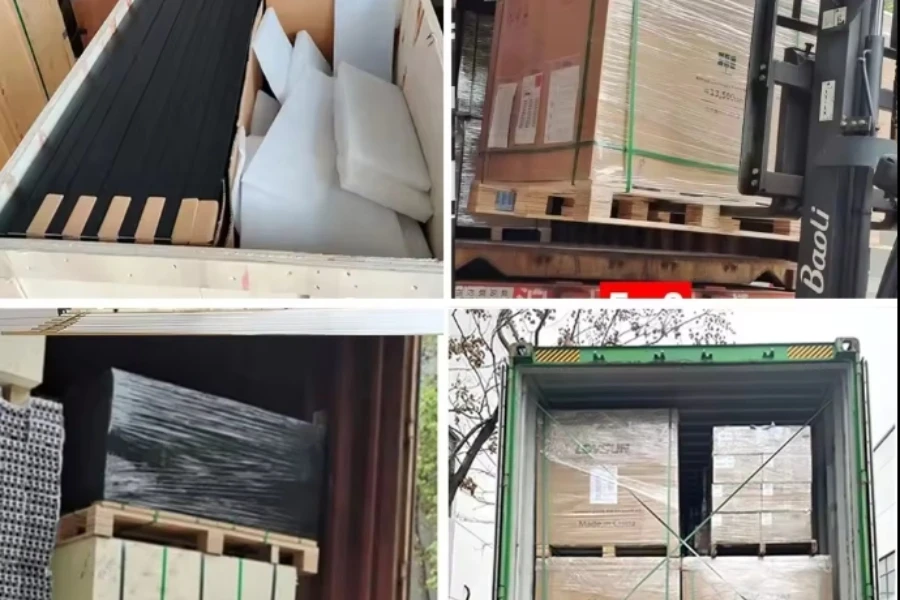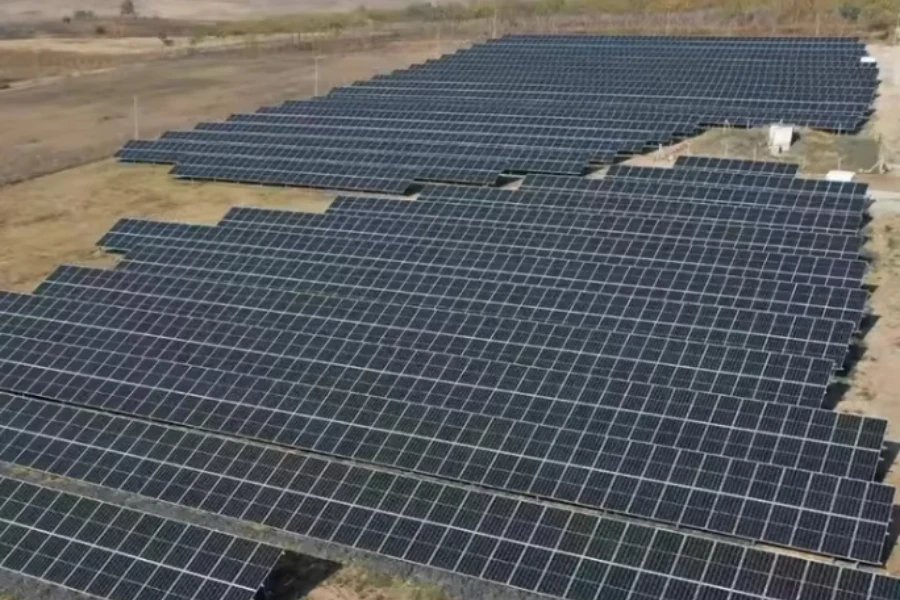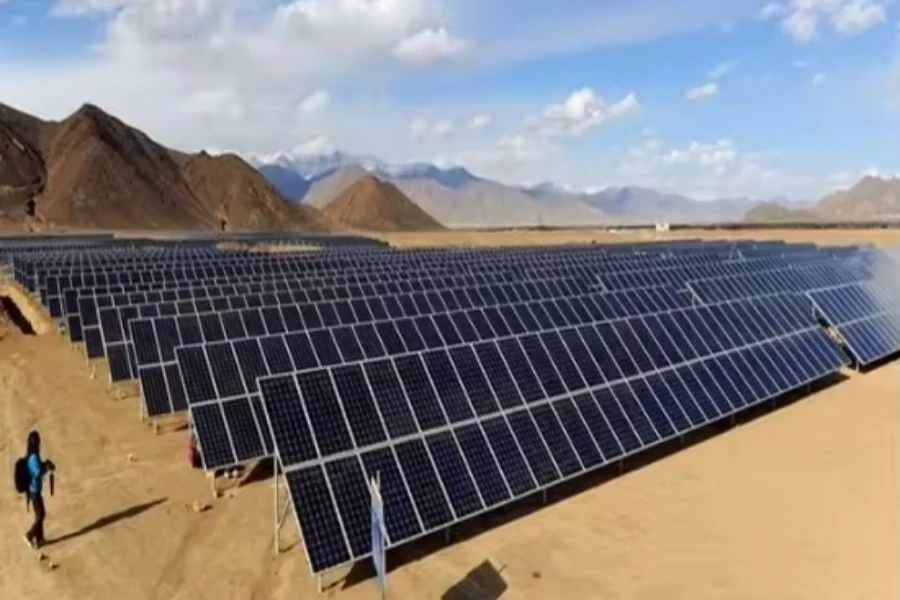Solar power plants utilize abundant solar energy and are becoming a cornerstone of the renewable energy sector. These facilities typically consist of huge arrays of photovoltaic cells that convert sunlight directly into electricity. Whether powering urban centers, remote villages or industrial complexes, solar power plants offer a scalable and adaptable source of energy.
This article will provide a brief overview of solar power plants and then delve into key aspects to consider when investing in solar power plants in 2024.
Table of Contents
What is a solar power plant?
Composition
Classification
Application scenarios
What to consider when choosing a solar power plant?
Financial viability
Technology trends
The bottom line
What is a solar power plant?
A solar power plant is a facility that utilizes solar photovoltaic (PV) technology or solar thermal (CSP) technology to convert sunlight directly or indirectly into electricity. In PV, a solar power plant consists primarily of a large number of solar panels that capture sunlight and convert it to direct current (DC), which is then converted by an inverter to alternating current (AC) available for commercial or domestic use.
Solar power plants can be distributed small-scale installations, such as home rooftop solar systems, or large-scale solar photovoltaic farms covering hundreds or even thousands of acres. On the other hand, solar thermal power plants, which use mirrors to concentrate the sun’s rays and heat a fluid to produce steam, which in turn drives a turbine generator to produce electricity, are more commonly used in large-scale industrial applications.
The construction and operation of solar power plants is strongly influenced by geographic location, climatic conditions, and local policy and economic factors. Ideal solar power plant locations have high solar radiation, low topographic shading and favorable climatic conditions.
In addition to environmental factors, economic feasibility is key to solar power plant project decisions, including equipment costs, installation and maintenance costs, electricity sales prices, and possible government subsidies and tax incentives.
As solar technology advances and costs continue to fall, solar power plants are becoming an integral part of the global energy mix, providing an effective way to achieve a sustainable energy supply and reduce greenhouse gas emissions.
Composition
The composition of a solar power plant varies depending on the type of technology (photovoltaic or thermal) and is shown separately below:
Photovoltaic power generation system
Solar panel (PV panel): this is the most basic component of a solar power plant and is responsible for capturing sunlight and converting it into direct current. Panels are usually made of silicon, which can be monocrystalline silicon, polycrystalline silicon or other thin-film photovoltaic materials.
Inverter: Converts the DC power generated by the solar panels into AC power for use in homes, businesses or the grid. The inverter is one of the key components of a solar power plant and affects the overall efficiency and reliability of the system.
Racking system: Used to hold the solar panels in place, either fixed or tracking. Tracking type racking can adjust the angle with the movement of the sun to improve the light receiving efficiency of the PV panels.
Junction box and distribution system: including cables, junction boxes, distribution boards, etc., which are responsible for the transmission and distribution of electricity.
Monitoring and control system: used to monitor the operating status of the power plant, including power production, system performance and safety monitoring.
Thermal power generation system
Collector: usually a series of mirrors or lenses responsible for focusing sunlight onto a receiver. Collectors can be flat plate, parabolic or tower structures.
Receiver: receives the concentrated sunlight and converts it into thermal energy, usually by heating a fluid (e.g., water, oil, or salt solution) to store the energy.
Thermal energy storage system: Particularly important in a cogeneration system, the ability to store thermal energy for use at night or in cloudy weather improves the reliability and stability of the plant.
Genset: Thermal energy is converted to steam through a heat exchanger, which drives a turbine and generator to produce electricity.
Cooling system: Used to cool the steam from the turbine and condense it back into liquid water for recycling.
Classification

Solar power plants can be categorized mainly on the basis of their technology type, size and installation location. Below are a few common ways of categorizing solar power plants:
Classification by technology type
Photovoltaic systems (PV systems): this type of solar power plant converts sunlight directly into electricity, using solar photovoltaic panels. It is currently the most widely used solar power technology.
Solar thermal power systems (CSP systems): Solar thermal power concentrates sunlight through mirrors, which heats a fluid to produce steam, which in turn generates electricity through a steam turbine. CSP systems are typically used for large-scale solar power generation.
Classification by size
Residential solar systems: Installed on the roof of an individual’s home, they are smaller in scale and are typically used to meet the electricity needs of a household.
Commercial solar systems: Used in businesses or public buildings, and are sized between residential and large-scale solar plants, and are designed to reduce the cost of commercial electricity.
Utility-scale solar power plants: These are the largest solar power plants, usually covering hundreds to thousands of acres, and supply power directly to the grid.
Classification by installation location
Ground-mounted solar power plants: Installed directly on the ground, these can be large-scale solar photovoltaic or solar thermal power plants in open areas.
Rooftop solar systems: Installed on the roof of a residence, commercial building, or industrial facility, making full use of available space and reducing land use.
Floating solar power station: Installed on the surface of water bodies, such as lakes, reservoirs and breeding ponds, it does not take up valuable land resources, while the cooling effect of the water surface improves the efficiency of photovoltaic panels.
Classification by operation mode
Grid-tied solar power plants: Directly connected to the public grid, they can supply power to or draw power from the grid, and are suitable for most commercial and utility-scale projects.
Off-grid: Operates independently of the grid and is usually equipped with a battery storage system for applications in remote areas or where the grid does not provide coverage.
Application scenarios
Solar power plants have a variety of application scenarios that can meet a wide range of occasions, from small-scale household electricity use to large-scale industrial energy needs. The following are some of the main application scenarios for solar power plants:
Residential energy supply
Solar power plants installed on the rooftop or in the courtyard of a home can provide clean power to the home, reducing reliance on the traditional power grid and potentially selling power to the grid through a grid feedback mechanism, realizing energy self-sufficiency and reducing electricity bills.
Commercial and industrial power
Solar systems installed on the rooftops or unused land of commercial buildings and industrial facilities can significantly reduce a business’s operating costs while helping it meet its sustainability goals and reduce its carbon footprint.
Public facilities and infrastructure
Solar power plants installed on the rooftops and open spaces of public facilities such as parks, schools, hospitals, and government buildings not only provide a stable supply of electricity, but also serve as demonstration projects to showcase sustainable energy technologies.
Power supply for remote and isolated areas
For remote areas not covered by the grid, solar power plants (especially off-grid systems) offer a cost-effective energy solution to provide residents with basic lighting, communications, and living electricity.
Transportation
Solar power plants can also be applied to transportation infrastructure such as electric vehicle charging stations, street lighting and traffic signals, promoting a green transformation in the transportation sector.
What to consider when choosing a solar power plant?

When selecting a solar power plant, a number of factors need to be considered to ensure a successful and cost-effective project. Below are some important considerations and applicable scenarios:
Geographic location and climatic conditions
Duration and intensity of sunlight: It is more favorable to choose an area with long sunlight hours and high light intensity.
Climatic conditions: Areas that are too humid or foggy may reduce the efficiency of solar panels.
Terrain: Flat or slightly sloping terrain is more suitable for installing solar panels.
Electricity demand and load analysis
Peak and valley loads: Adjust the design and size of the solar plant to the peaks and valleys of electricity demand.
Continuity demand: For occasions where 24-hour uninterrupted power supply is required, consider the use of solar power plants in combination with other forms of energy, such as energy storage devices.
Economic considerations
Initial investment: Consider the start-up capital and construction costs of the project.
Operation and maintenance costs: These include cleaning solar panels, system maintenance, etc.
Electricity selling price and subsidies: Governments in different regions may have subsidy policies for solar projects, and the electricity selling price should also be considered.
Technology selection and supplier evaluation
Technology maturity: Select mature and reliable solar panel and inverter technologies.
Supplier reputation: Select equipment suppliers and construction units with good reputation and after-sales service.
Financial viability

In this section, the financial viability of installing a PV-based solar power plant is demonstrated through two simple examples (domestic as well as commercial). The factors considered contain the following components:
- Initial installation costs and system size are set based on industry averages;
- Annual electricity generation assumes the average efficiency of solar power plants, which varies depending on geographic location and system design;
- Average electricity prices reflect the purchase price for solar electricity in different regions;
- Operation and maintenance costs include, but are not limited to, regular inspections, cleaning of solar panels, replacement of damaged components, etc;
- Annual electricity savings calculations are based on annual electricity generation and average electricity prices, as well as maintenance costs.
| Parameter | Small residential | Commercial project |
| Initial installation cost | US$ 11,000 | US$ 110,000 |
| System size | 10 kW | 100 kW |
| Annual power generation | ~14,000 kWh | ~140,000 kWh |
| Average electricity price | US$ 0.17/kWh | US$ 0.13/kWh |
| Operation and maintenance costs | US$ 100/year | US$ 1000/year |
| System lifespan | 25 years | 25 years |
| Annual electricity cost savings | US$ 2,400 | US$ 18,000 |
| Total electricity cost savings over 25 years | US$ 60,000 | US$ 45,0000 |
| Total savings | US$ 46,500 | US$ 315,000 |
Technology trends

Solar power plant technology is rapidly evolving, exhibiting several notable trends that signal future directions and potential innovations in the solar sector. Below are the key trends in current solar power plant technology:
Increasing efficiency
Researchers and manufacturers continue to improve the conversion efficiency of solar cells and modules through new materials and technological innovations. For example, advanced technologies such as chalcogenide solar cells and multi-junction solar cells show the potential to outperform traditional silicon-based cells and convert solar energy into electricity more efficiently.
Reducing costs
Although the construction and operating costs of solar power plants have fallen dramatically, further cost reductions remain an important goal for the industry. The construction and maintenance costs of solar power plants can be further reduced by scaling up production, improving production efficiency, using cheaper materials and optimizing system design.
Integration and multifunctionality
Solar power plants are becoming more integrated and multifunctional. For example, building-integrated photovoltaic (BIPV) technology integrates solar cells into building materials, both to generate electricity and as part of the building. In addition, the integration of solar power plants with energy storage systems improves energy efficiency and enhances the stability and reliability of the power supply.
Intelligent and digital
The use of digital technologies is improving the efficiency and performance of solar power plant operations and maintenance. Using Internet of Things (IoT) technology, big data and Artificial Intelligence (AI) analytics, solar power plants can achieve remote monitoring, intelligent fault diagnosis and predictive maintenance to optimize plant performance and economic efficiency.
Integration of distribution grids and microgrids
Solar power plants are increasingly being integrated into distribution grids and microgrids to provide distributed energy solutions. This integration can improve grid flexibility and immunity to interference, especially in remote areas and small communities, and enable energy self-sufficiency through solar microgrids.
The bottom line
Solar power plants, as facilities that capture and convert solar energy into electricity, are capable of providing clean, renewable energy in a variety of scenarios, ranging from residential and commercial buildings to power supply for agriculture and remote areas, as well as large-scale energy storage and power conditioning systems.
With policy support and increased public awareness, the application of solar power plants will further expand to provide more clean energy solutions around the world. Finally, if you are interested in installing a solar power plant for your home or business, please visit this link.




